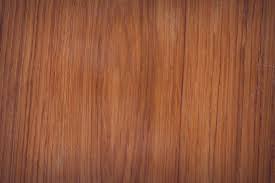When planning your next construction or renovation project, the choice of materials is crucial. Among the myriad options available, plywood veneer stands out as a versatile and reliable choice. Let’s discuss why you should consider plywood veneer for your next venture, exploring its benefits, applications, and the value it brings to your projects.
What is Plywood Veneer?
Plywood veneer is a type of engineered wood made by gluing together thin layers, or veneers, of wood. These veneers are typically arranged with their grains running perpendicular to each other, which enhances the strength and durability of the plywood. The topmost layer, known as the face veneer, is often made from high-quality wood species, giving the finished product a desirable appearance.
Benefits of Plywood Veneer
There are numerous reasons why plywood veneer is a preferred material in various construction and design projects. Here are some of its key benefits:
1. Strength and Durability
Plywood veneer’s cross-grain structure significantly enhances its strength and stability. This makes it an excellent choice for structural applications where reliability and load-bearing capacity are crucial. Unlike solid wood, plywood is less likely to warp, crack, or shrink over time, ensuring the longevity of your projects.
2. Versatility
Plywood veneer is incredibly versatile and can be used in a wide range of applications, from furniture making to interior paneling and cabinetry. Its availability in various grades, thicknesses, and finishes means you can find the perfect type of plywood veneer to match your specific needs.
3. Cost-Effective
Compared to solid wood, plywood veneer is generally more cost-effective. It offers a high-quality appearance and performance at a fraction of the cost. This makes it an attractive option for both large-scale commercial projects and smaller residential renovations.
4. Ease of Use
Plywood veneer is easy to work with, whether you’re cutting, shaping, or fastening it. Its uniformity and stability make it a favorite among builders and craftsmen, as it allows for precise and consistent results. This ease of use can significantly reduce labor time and costs.
5. Aesthetic Appeal
The face veneer of plywood can be made from a variety of attractive wood species, such as oak, maple, or walnut, providing a high-end appearance. This makes plywood veneer an excellent choice for visible applications like furniture, cabinetry, and wall paneling where aesthetics are important.
Applications of Plywood Veneer
The versatility of plywood veneer allows it to be used in a multitude of applications. Here are some common uses:
1. Furniture
Plywood veneer is widely used in furniture making due to its strength, durability, and attractive finish. It can be used to create everything from sleek, modern pieces to traditional, rustic designs. The ease with which it can be shaped and joined makes it ideal for custom furniture projects.
2. Interior Design
In interior design, plywood veneer is often used for wall paneling, ceilings, and built-in cabinetry. Its ability to provide a seamless and elegant look makes it a popular choice for enhancing the aesthetic appeal of both residential and commercial interiors.
3. Flooring
Plywood veneer can also be used in flooring applications. Engineered wood flooring often incorporates a top layer of high-quality veneer over a plywood core, combining the beauty of natural wood with the stability and durability of plywood.
4. Doors and Windows
The stability and strength of plywood veneer make it an excellent material for doors and window frames. It ensures that these components remain sturdy and resistant to warping, which is especially important in areas with fluctuating temperatures and humidity levels.
Sustainability of Plywood Veneer
In today’s environmentally conscious world, sustainability is a key consideration in material selection. Plywood veneer is an environmentally friendly option for several reasons:
- Efficient Use of Wood Resources: Plywood production uses wood more efficiently than solid wood products. Thin veneers are peeled from logs, maximizing the use of each tree.
- Recyclability: Plywood veneer can often be recycled or repurposed, reducing waste and contributing to a circular economy.
- Sustainable Forestry: Many plywood products come from sustainably managed forests, ensuring that the impact on the environment is minimized. Look for certifications such as FSC (Forest Stewardship Council) to ensure the plywood you choose comes from responsible sources.
Read More: Why People Love the Aesthetic of Brick Walls in Their Homes
Choosing the Right Plywood Veneer
When selecting plywood veneer for your project, consider the following factors:
- Grade: Plywood is available in different grades, ranging from A to D. A-grade plywood has a smooth, high-quality face veneer, while lower grades may have more knots and imperfections. Choose the grade that best suits your aesthetic and functional needs.
- Core Type: The core of plywood can be made from various materials, including softwood, hardwood, or a combination of both. The type of core affects the strength, weight, and cost of the plywood.
- Thickness: Plywood comes in various thicknesses, typically ranging from 1/8 inch to 1 inch. The thickness you need will depend on the specific requirements of your project.
- Finish: Consider whether the plywood veneer needs to be pre-finished or if you plan to apply your own finish. Pre-finished plywood can save time and effort, but custom finishing allows for greater control over the final appearance.
Conclusion
Plywood veneer is a versatile, cost-effective, and sustainable material that offers numerous benefits for a wide range of applications. Its strength, durability, and aesthetic appeal make it an excellent choice for both structural and decorative projects. So, let’s discuss: Are you ready to explore the potential of plywood veneer for your next venture? What specific applications do you have in mind, and how can plywood veneer enhance the quality and appeal of your project? Share your thoughts, and let’s embark on this exciting journey together.
Apart from that if you want to know about Upgrade Your Fire Pit with Faux Stone then please visit our Exterior Category

















